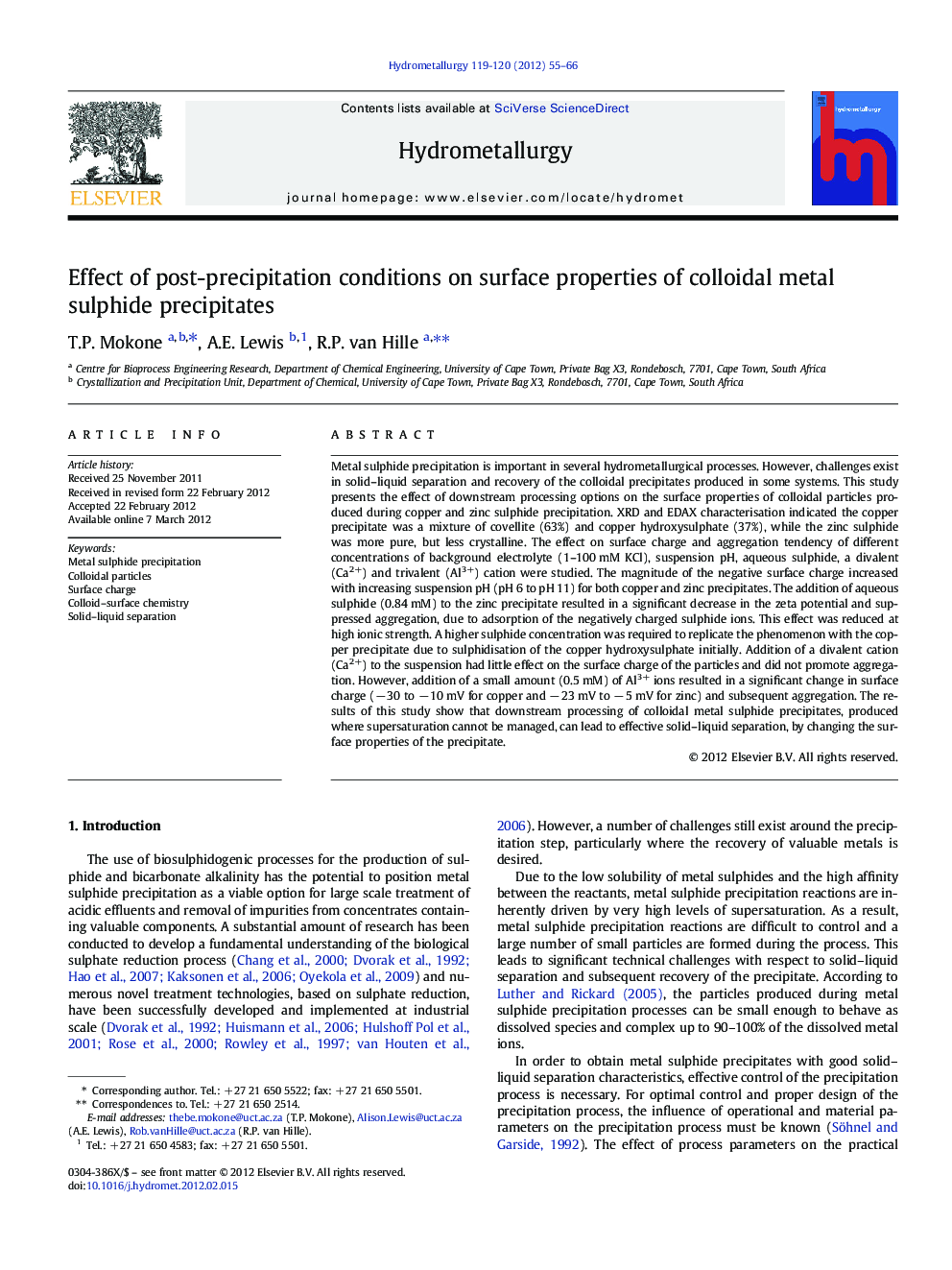| Article ID | Journal | Published Year | Pages | File Type |
|---|---|---|---|---|
| 212530 | Hydrometallurgy | 2012 | 12 Pages |
Metal sulphide precipitation is important in several hydrometallurgical processes. However, challenges exist in solid–liquid separation and recovery of the colloidal precipitates produced in some systems. This study presents the effect of downstream processing options on the surface properties of colloidal particles produced during copper and zinc sulphide precipitation. XRD and EDAX characterisation indicated the copper precipitate was a mixture of covellite (63%) and copper hydroxysulphate (37%), while the zinc sulphide was more pure, but less crystalline. The effect on surface charge and aggregation tendency of different concentrations of background electrolyte (1–100 mM KCl), suspension pH, aqueous sulphide, a divalent (Ca2+) and trivalent (Al3+) cation were studied. The magnitude of the negative surface charge increased with increasing suspension pH (pH 6 to pH 11) for both copper and zinc precipitates. The addition of aqueous sulphide (0.84 mM) to the zinc precipitate resulted in a significant decrease in the zeta potential and suppressed aggregation, due to adsorption of the negatively charged sulphide ions. This effect was reduced at high ionic strength. A higher sulphide concentration was required to replicate the phenomenon with the copper precipitate due to sulphidisation of the copper hydroxysulphate initially. Addition of a divalent cation (Ca2+) to the suspension had little effect on the surface charge of the particles and did not promote aggregation. However, addition of a small amount (0.5 mM) of Al3+ ions resulted in a significant change in surface charge (− 30 to − 10 mV for copper and − 23 mV to − 5 mV for zinc) and subsequent aggregation. The results of this study show that downstream processing of colloidal metal sulphide precipitates, produced where supersaturation cannot be managed, can lead to effective solid–liquid separation, by changing the surface properties of the precipitate.
► Colloidal metal sulphides have poor solid–liquid separation characteristics. ► Changing surface properties during downstream processing can improve separation. ► Zeta potential of colloidal sulphides is reduced at low pH and high ionic strength. ► Magnitude of the negative zeta potential is increased by free sulphide in solution. ► Addition of trivalent ions (Al3+) reduces surface charge and promotes aggregation.
